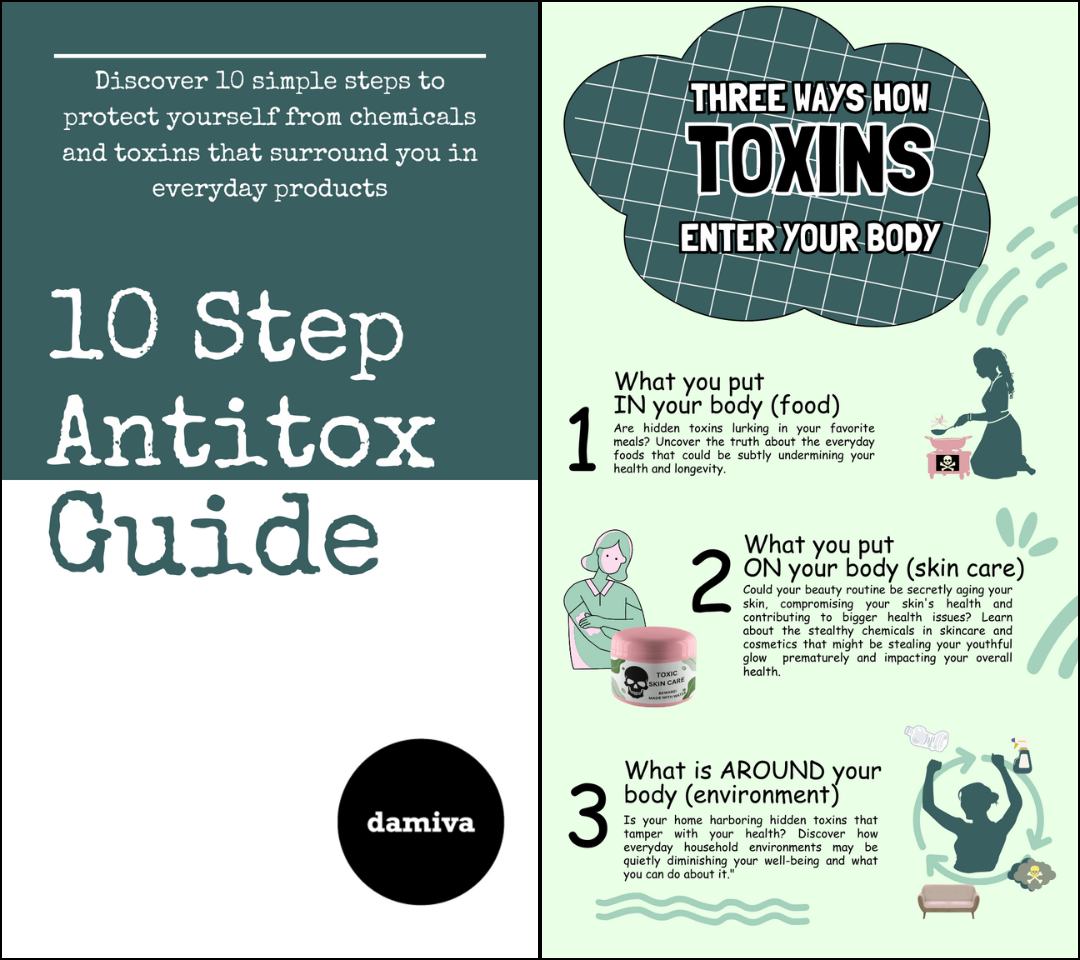Introduction to PFOS and Skincare
What are PFOS?
Perfluorooctane sulfonate (PFOS) is a synthetic chemical that belongs to a larger group known as per- and polyfluoroalkyl substances (PFAS). These man-made chemicals are characterized by their strong carbon-fluorine bonds, which make them resistant to heat, water, and oil. PFOS and its related compounds have been used in a variety of industrial applications and consumer products, including non-stick cookware, stain-resistant fabrics, and, notably, skincare products. Their persistence and resistance to degradation have earned them the nickname “forever chemicals,” as they do not break down easily in the environment or the human body.
Prevalence of PFOS in Skincare Products
Recent studies have raised concerns about the widespread presence of PFOS in skincare products. Investigations have revealed that 52% of tested makeup items in North America contained markers for PFAS, with particularly high levels found in products like foundations, waterproof mascara, and long-lasting lipsticks. The alarming aspect is that many of these products do not disclose the presence of PFOS or related chemicals on their labels, despite regulatory requirements to do so. This lack of transparency makes it challenging for consumers to make informed choices and avoid exposure to these potentially harmful substances.
The Importance of Understanding PFOS for Wellness Advocates
For wellness advocates, understanding the risks associated with PFOS is crucial. These advocates play a pivotal role in educating consumers about the potential health hazards linked to PFOS, including endocrine disruption, cancer, and other serious health issues. By staying informed about the latest research and regulatory developments, wellness advocates can guide consumers towards safer skincare choices and advocate for stricter industry standards. Moreover, they can support legislative efforts to ban or limit the use of PFOS in cosmetics, contributing to a healthier and more sustainable future for all.

Popular Read: Endocrine Disruptors in Skincare: What You Need to Know
The Health Risks Associated with PFOS
Endocrine Disruption and Hormonal Imbalance
Perfluorooctane sulfonate (PFOS) is a persistent organic pollutant that has been linked to a range of health issues, particularly concerning the endocrine system. Endocrine disruptors like PFOS can interfere with the body’s hormonal balance, leading to potential reproductive issues, thyroid dysfunction, and metabolic changes. These disruptions can manifest as altered puberty timing, fertility problems, and increased risks of endocrine-related cancers. The stability of PFOS compounds means they can accumulate in the body over time, exacerbating their endocrine-disrupting effects and leading to long-term health consequences.
Potential Links to Breast Cancer
Research has raised concerns about the association between PFOS exposure and breast cancer. PFOS can mimic estrogen, a hormone known to play a role in the development of breast cancer. By binding to estrogen receptors, PFOS may contribute to the proliferation of breast tissue cells, potentially increasing the risk of cancerous growths. While the direct causality between PFOS and breast cancer requires further study, the potential link underscores the need for caution and further research.
Impact on Aging and Energy Levels
PFOS exposure has also been implicated in accelerated aging and reduced energy levels. These chemicals can induce oxidative stress and inflammation, which are key factors in the aging process. Additionally, PFOS may affect mitochondrial function, which is crucial for energy production in cells. The disruption of mitochondrial activity can lead to fatigue and other symptoms related to low energy, further impacting an individual’s quality of life and overall well-being.
Other Known Health Concerns
- Immune System: PFOS can weaken the immune system, reducing its ability to fight off infections and potentially diminishing the efficacy of vaccines.
- Developmental Effects: Prenatal and early life exposure to PFOS has been associated with developmental delays and adverse effects on growth, learning, and behavior in children.
- Liver Damage: PFOS can accumulate in the liver, leading to hepatotoxicity and impairing liver function, which is vital for detoxification and metabolism.
- Cholesterol Levels: Studies have found a correlation between PFOS exposure and increased cholesterol levels, which is a risk factor for heart disease.
Given the wide-ranging and serious health risks associated with PFOS, it is critical for wellness advocates to be informed and proactive in addressing these concerns. Understanding the potential dangers of PFOS in skincare products is an essential step in safeguarding public health and advocating for safer alternatives.

Do you have the most commonly used but toxic, disease bringing chemicals in your skin care? Many chemicals in skincare are hormone disruptors and make menopause symptoms worse.
Find out more…
Regulatory Landscape for PFOS in Skincare
Current Regulations and Standards
The regulatory framework for perfluorooctansulfonic acid (PFOS) in skincare and other consumer products is complex and evolving. In the United States, the Environmental Protection Agency (EPA) has taken the lead in addressing PFOS through various actions. As of the early 2000s, many long-chain PFAS chemicals, including PFOS, have been phased out of production. However, there is no legally enforceable federal maximum contamination level (MCL) for PFAS under the Safe Drinking Water Act. The EPA established a non-regulatory health advisory for PFOS of 70 parts per trillion in 2016, and subsequent actions have included issuing guidance for cleanup and proposing PFOS as hazardous substances under the Comprehensive Environmental Response, Compensation, and Liability Act (CERCLA).
Despite these efforts, gaps remain in the regulation of PFOS in skincare products specifically. The Food and Drug Administration (FDA), which regulates cosmetics, has not set specific limits on PFOS in skincare. This lack of specific skincare product regulation has led to a patchwork of state-level regulations, with states like Michigan, New Jersey, New York, and Vermont setting more stringent MCLs for PFAS in drinking water, which indirectly affects skincare products.
Gaps in Regulation and Consumer Protection
One of the significant gaps in the regulation of PFOS in skincare is the absence of a unified national standard. This gap has resulted in varying levels of protection depending on the state, leading to potential confusion for consumers and manufacturers. Additionally, the “grandfathering” of existing chemicals and the “fragrance loophole” in labeling requirements allow PFOS to remain in consumer products without full disclosure. The lack of mandatory testing for all chemicals used in skincare products means that only a fraction of the 84,000 chemicals in circulation have been assessed for safety, leaving consumers at risk of exposure to potentially harmful substances.
The Role of Wellness Advocates in Regulation
Wellness advocates play a crucial role in bridging the regulatory gaps and enhancing consumer protection. By raising awareness about the risks associated with PFOS, advocates can influence consumer behavior and demand for safer products. They can also participate in the regulatory process by submitting comments during rulemaking, advocating for stricter standards, and supporting legislation that aims to eliminate harmful chemicals from skincare products.
Moreover, wellness advocates can collaborate with organizations like the Environmental Working Group (EWG) to conduct and disseminate research on the health impacts of PFOS. Through education and community engagement, they can build a movement towards more transparent and health-conscious skincare practices. By engaging with policymakers and industry leaders, wellness advocates can push for the development of regulations that prioritize consumer health and the environment over industrial interests.

Feeling You Have a Right to Safe Beauty & Fem Care?
If so, it may be time for a change. It starts with knowledge. We have a few suggestions in our new guides.
Identifying PFOS in Skincare Products
Reading and Understanding Labels
For wellness advocates and consumers alike, the ability to read and understand skincare product labels is crucial in identifying the presence of perfluorooctane sulfonate (PFOS) and related per- and polyfluoroalkyl substances (PFAS). These chemicals, often referred to as “forever chemicals” due to their persistence in the environment and the human body, can be found in a variety of skincare products. To identify PFOS, look for ingredients with “fluoro” or “perfluoro” prefixes. However, it’s important to note that not all products with PFOS will list these compounds on the label. The FDA requires that all ingredients be listed in descending order of concentration, but PFOS may be present as a result of raw material impurities or the breakdown of other PFAS ingredients, making them difficult to spot.
Common Skincare Products Containing PFOS
Recent studies have highlighted the alarming prevalence of PFOS in a wide range of skincare products. Waterproof mascara, long-lasting lipstick, and foundations are among the most common culprits, with high levels of fluorine indicating the presence of PFAS. In fact, 82% of waterproof mascaras and 62% of long-lasting lipsticks tested in a study were found to contain high levels of fluorine. Other products such as eyeliners, eyeshadows, nail polishes, lotions, cleansers, and shaving creams have also been found to contain PFAS. The challenge for consumers is that PFOS and related chemicals are not always disclosed on product labels, making it difficult to make informed choices.
Alternatives to PFOS-Containing Products
For those looking to avoid PFOS in skincare, there are alternatives such as Damiva. Damiva’s products do not contain PFOS, or parabens, phthalates, sulfates, PEGs etc because Damiva products are completely chemical-free. Damiva holds the patents for water-free, chemical-free skin care and is the market leader.
Ultimately, the responsibility to avoid PFOS and PFAS in skincare products lies with both consumers and wellness advocates. By staying informed, reading labels carefully, and choosing products from responsible brands, individuals can protect themselves from the potential health risks associated with these chemicals.
Do you know the three main ways that your body gets in touch with harmful chemicals with everyday products? Knowledge is Power!
The Ultimate Detox Guide will tell you how to lower your exposure to harmful chemicals!

Detoxification and Avoiding PFOS Exposure
Detox Methods for PFOS
Detoxification from PFOS (perfluorooctanesulfonic acid), a persistent environmental pollutant, can be challenging due to its ability to accumulate in the body. However, certain strategies may help reduce the body burden of PFOS:
- Water Filtration: Using activated carbon filters or reverse osmosis systems can help remove PFOS from drinking water.
- Phytoremediation: Consuming certain plants and foods, such as cilantro, may assist in the detoxification process due to their potential to bind and remove heavy metals and toxins from the body.
- Medical Interventions: In some cases, healthcare professionals may recommend treatments like chelation therapy, although its effectiveness for PFOS specifically requires further research.
Lifestyle Changes to Reduce Exposure
Minimizing exposure to PFOS is crucial for reducing its accumulation in the body. Consider the following lifestyle adjustments:
- Avoid PFOS-Containing Products: Be vigilant about avoiding products known to contain PFOS, such as certain non-stick cookware, stain-resistant fabrics, and some personal care products.
- Conscious Consumer Choices: Opt for PFOS-free alternatives and support brands that are transparent about their ingredients and manufacturing processes.
- Advocate for Change: Engage in community efforts to advocate for stricter regulations on PFOS use and better environmental practices.
Holistic Approaches to Skincare and Wellness
Adopting a holistic approach to skincare and overall wellness can also contribute to reducing PFOS exposure:
- Natural Skincare: Embrace all-natural skincare products that are free from synthetic chemicals, including PFOS. The simplest way is to stay away from water-based products because they need chemical preservatives
- Healthy Diet: A diet rich in antioxidants, fiber, and clean water can support the body’s natural detoxification systems.
- Stress Reduction: Engage in practices like yoga, meditation, and regular exercise to enhance overall health and resilience against environmental toxins.
By incorporating these detox methods, lifestyle changes, and holistic approaches, individuals can take proactive steps to reduce PFOS exposure and its potential health risks.
Do you know the 3 main ways how your body is exposed to harmful chemicals, which affect your hormones, your thyroid, health and beauty?
If not, it may be time to learn about them. It takes about 1-2 minutes.
We have a few suggestions how to avoid these silent health and immune system killers in our new guide.

Conclusion: Empowering Wellness Advocates
Summary of Key Takeaways
In our exploration of PFOS in skincare, we’ve uncovered critical information that wellness advocates need to be aware of. PFOS, a class of per- and polyfluoroalkyl substances, are synthetic chemicals found in various consumer products, including skincare items. Their prevalence in skincare products is concerning due to their potential health risks, such as endocrine disruption, hormonal imbalance, and links to breast cancer. The regulatory landscape for PFOS is evolving, with recent actions by the EPA designating certain PFOS compounds as hazardous substances under CERCLA. However, gaps in regulation remain, highlighting the need for continued advocacy and education.
The Role of Wellness Advocates in Promoting PFOS-Free Skincare
Wellness advocates play a pivotal role in the movement towards safer skincare products. By staying informed about the risks associated with PFOS and understanding how to identify these chemicals on product labels, advocates can guide consumers towards healthier choices. Advocacy extends beyond personal choices, as wellness advocates can influence industry standards and push for stricter regulations. By leveraging their platforms, wellness advocates can raise awareness, support campaigns for PFOS-free products, and encourage companies to reformulate products with safer alternatives.
For consumers and wellness advocates alike, the journey towards PFOS-free skincare is ongoing. Here are actionable steps to take:
- Educate Yourself and Others: Stay updated on the latest research and regulatory developments regarding PFOS. Share this knowledge within your community to foster informed decision-making.
- Read Labels Carefully: Choose wateer-free skin care because this type of skincare can be made without chemicals. Become proficient in identifying PFOS and related chemicals on skincare product labels, and choose PFOS-free options.
- Support Transparent Brands: Choose to purchase from brands such as Damiva that disclose their ingredients and are committed to non-chemical formulations.
- Advocate for Change: Engage with policymakers and industry leaders to advocate for stricter regulations on PFOS in skincare products.
- Join or Start Campaigns: Participate in or initiate campaigns that promote awareness and action on PFOS-free skincare.
As wellness advocates, we have the power to drive change and promote a healthier future. By taking these steps, we can contribute to a world where skincare is not only about beauty but also about well-being and safety.

















